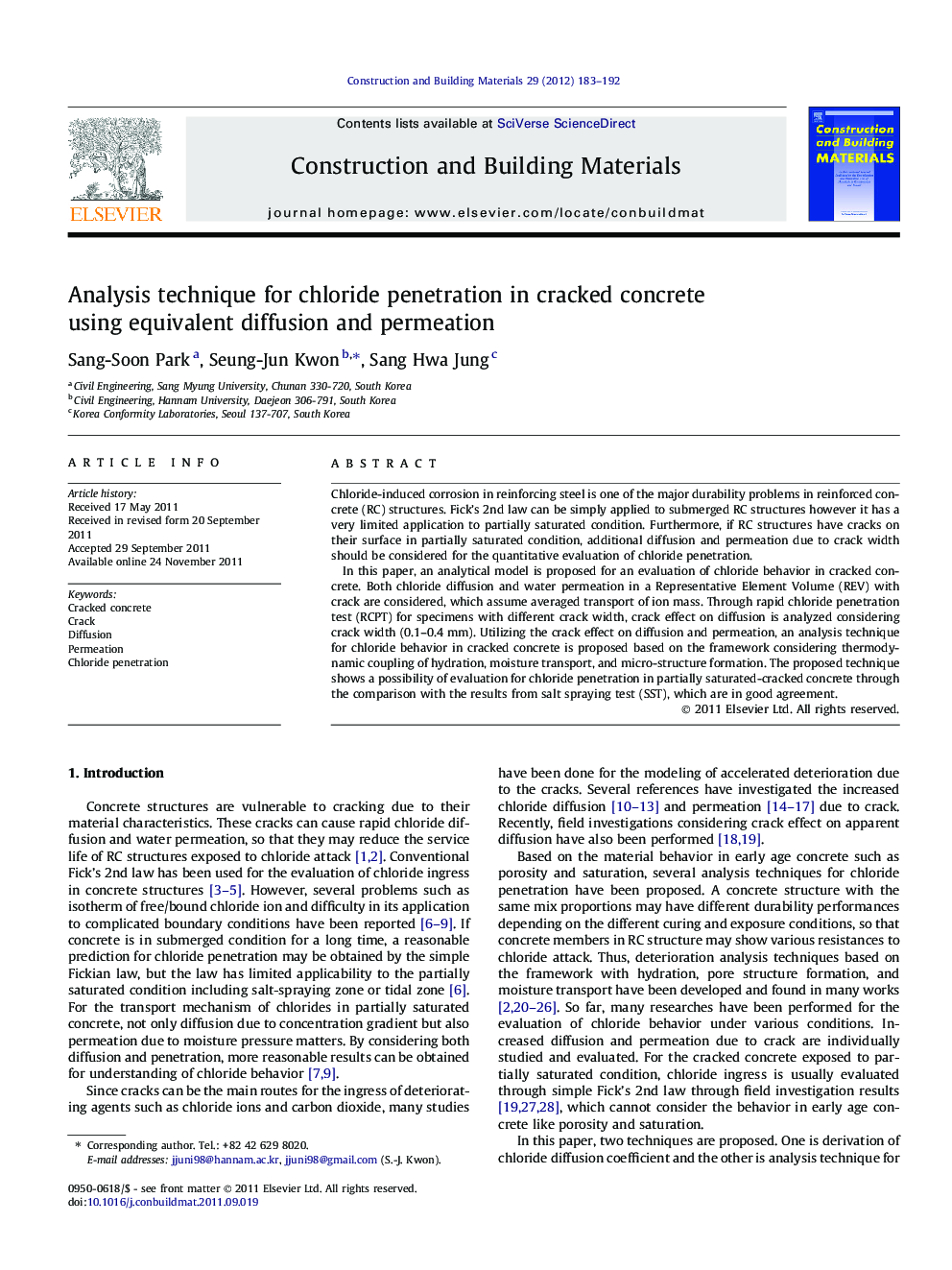| Article ID | Journal | Published Year | Pages | File Type |
|---|---|---|---|---|
| 259059 | Construction and Building Materials | 2012 | 10 Pages |
Chloride-induced corrosion in reinforcing steel is one of the major durability problems in reinforced concrete (RC) structures. Fick’s 2nd law can be simply applied to submerged RC structures however it has a very limited application to partially saturated condition. Furthermore, if RC structures have cracks on their surface in partially saturated condition, additional diffusion and permeation due to crack width should be considered for the quantitative evaluation of chloride penetration.In this paper, an analytical model is proposed for an evaluation of chloride behavior in cracked concrete. Both chloride diffusion and water permeation in a Representative Element Volume (REV) with crack are considered, which assume averaged transport of ion mass. Through rapid chloride penetration test (RCPT) for specimens with different crack width, crack effect on diffusion is analyzed considering crack width (0.1–0.4 mm). Utilizing the crack effect on diffusion and permeation, an analysis technique for chloride behavior in cracked concrete is proposed based on the framework considering thermodynamic coupling of hydration, moisture transport, and micro-structure formation. The proposed technique shows a possibility of evaluation for chloride penetration in partially saturated-cracked concrete through the comparison with the results from salt spraying test (SST), which are in good agreement.
▸ Modeling and analysis technique for chloride is performed for cracked concrete. ▸ Extensive test for chloride diffusion in cracked concrete is carried out. ▸ Crack effect on diffusion and permeation is derived for chloride behavior evaluation. ▸ Good agreement with test results is shown for large crack over 0.2 mm.
